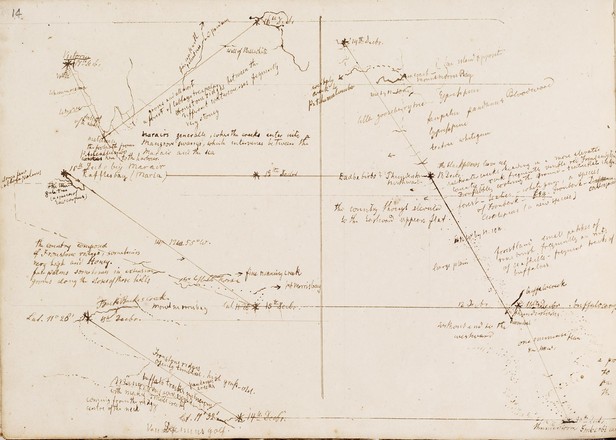Leichhardt's journey to the interior
By Australian Dictionary of Biography
Leichhardt
prepared his journal of the expedition from Moreton Bay to Port Essington for publication
in England. He gave lectures on the 'Geology, Botany, Natural History, and
Capabilities of the Country between Moreton Bay and Port Essington', and
organized his next expedition, using to equip it part of his share (£1500) of
the Port Essington reward. He planned to cross Australia from the Darling Downs
to the west coast and to follow the coast south to the Swan River settlement.
In December 1846 his party of eight including himself set out from the Darling
Downs. Delayed by heavy rain and the straying of animals being taken for food,
and weakened by fever, they were forced, after covering only 500 miles (805
km), to return in June 1847. After a fortnight's rest Leichhardt spent six
weeks and covered 600 miles (966 km) examining the course of the Condamine
River and the country between Mitchell's route (1846) and his own route.
In
August Leichhardt returned to Sydney to organize a second Swan River
expedition. By February 1848 a party of seven including himself was assembled
on the Darling Downs. He learned that Edmund Kennedy had returned from tracing the course of
the river named the Victoria by Mitchell, and had reported that it was the
upper part (Barcoo) of Cooper Creek. Believing himself again 'alone in the
field' and confident that he could solve many problems about central Australia
if he could skirt the northern limit of the desert he set out from the
Condamine River in March 1848. By 3 April he reached McPherson's station,
Cogoon, on the Darling Downs. After moving inland from Cogoon the expedition
disappeared and no evidence showing conclusively what happened to it has been
found.



 Back to list
Back to list